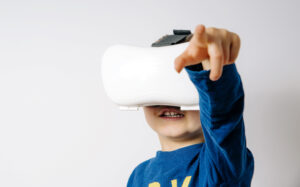
In recent years, game-based learning (GBL) and gamification have become major trends in physical education. These strategies increase student motivation in PE classes, even making theoretical content more appealing to young learners. This is not surprising, considering how popular games like Dance Dance Revolution and Just Dance have long been proven to encourage greater movement among users.
Exercise-related games or exergames are now being designed specifically for classroom usage for PE teachers to integrate within their traditional gym classes. However, while GBL and gamification have been critical drivers of change in PE, several other technological advancements have also been integrated into the field.
We will explore four of these below.
Online Fitness Apps
Apps have become invaluable tools in the fitness industry, offering anywhere from trackers to exercise routines to access with your phone easily. In modern physical education, this translates to better consistency among students. While phone usage is typically discouraged from class, gym teacher Seth Wolf in Wishek found a way to incorporate workout app PLT4M in his sessions. This provided his students with a comprehensive weight and conditioning training platform.
Here, students were given access to structured workout plans and instructional videos, allowing them to perfect their weightlifting techniques. With step-by-step guidance and performance tracking, PLT4M allows students to monitor their progress and receive real-time feedback. Thanks to the app taking on a considerable load in instruction, gym teachers can focus on accommodating and fostering mastery of exercises among students of varying levels.
Wearable Tech
Smartwatches, such as the Apple Watch, or fitness trackers, like the Fitbit Charge, are a type of wearable technology. These can monitor the user’s health stats, including heart rate and step counts, thus empowering students to take charge of their fitness goals. PE teachers can use this data to tailor their instruction to individual needs and gain real-time insights into the physical well-being of their students.
Wearable tech doesn’t stop at fitness trackers but also extends into smart glasses. These allow users to take hands-free photos and videos. PE teachers can use these devices to maximize online classes — providing students with a first-person perspective of the workout. These glasses can also be used for live streaming, as well as receiving and responding to student clarifications in real time without interrupting the routine. As a result, online PE can become more interactive and practical.
Video Analysis Software
Video analysis software, like Kinovea or Vernier, annotates and measures motion in videos for coaches and athletes to monitor their performance. This technology similarly enables instructors to record and review students’ movements during various sports and exercises. By providing instant visual feedback, teachers can help students perfect their techniques.
Such software can be a game-changer, particularly for asynchronous online PE classes, which rely on video submissions for grading. Teachers can use the software to break down complex movements step by step and better pinpoint areas that need improvement. Students can also watch their performance and compare it to ideal examples, thus promoting self-awareness and critical thinking and empowering students to refine their skills independently.
AR/VR Tech

Augmented Reality (AR) and Virtual Reality (VR) technologies transport students to virtual fitness environments to engage in realistic simulations and challenges. These immersive technologies provide students with opportunities for self-directed learning, allowing them to take the initiative, explore different scenarios, experiment with exercises and sports, and define their targets within the simulation. This can significantly help with engaging and motivating young children.
When combined with fitness tracking features, AR/VR tech can track user movements and provide real-time feedback on performance, as seen with the Oculus Quest VR headset and Oculus Move. Students can better monitor their workout duration, calories burned, and overall fitness improvements, creating a sense of accomplishment and motivation to keep moving.
With these tools, educators can empower students to excel in their PE journeys. The future of PE is full of exciting possibilities as we anticipate technology’s rapid growth in the digital age.








